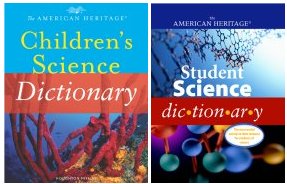Seeds of the Future Additional Information
Want to start a garden? Learn everything you need to know at Brooklyn Botanic Garden’s children’s gardening site: www.bbg.org/gar2/topics/childrensgardening/ (Brooklyn Botanic Garden).
Scientists at the Brooklyn Botanic Garden are studying and documenting all of the native plant species that live within 50 miles of New York City. Check out the New York Metropolitan Flora Project, with maps, lists and pictures at www.bbg.org/sci/nymf/(Brooklyn Botanic Garden).
The Seeds of Success program is trying to save native greenery throughout the United States. See pictures of seeds and plants at www.seedsofsuccess.phanfare.com/(Seeds of Success).
For information about the Greenbelt Native Plant Center, go to
www.sigreenbelt.org/Naturecenter/ncenter.htm (Greenbelt Nature Center).
To learn more about the Millennium Seed Bank, visit the project’s website at www.kew.org/msbp/(Royal Botanic Gardens, Kew, England).
Seed banks are focusing on flowering plants, or angiosperms. For more information about these types of plants, see en.wikipedia.org/wiki/Flowering_plant(Wikipedia).
For more information about Oriental bittersweet and the problems it’s causing, go to www.nps.gov/plants/alien/fact/ceor1.htm (Plant Conservation Alliance, Alien Plant Working Group).
Information about invasive species can be found at www.invasivespeciesinfo.gov/ (National Invasive Species Information Center).
American author Washington Irving wrote the story of Rip Van Winkle in 1819. To learn more about the story and the character, go to en.wikipedia.org/wiki/Rip_Van_Winkle(Wikipedia).
For an activity at Science News for Kids involving invasive species, check out http://www.sciencenewsforkids.org/articles/20040204/SciFiZone.asp.
Nelson, Bryn. 2007. Lessons from a lonely tortoise. Science News for Kids (Sept. 5). Available at http://www.sciencenewsforkids.org/2007/08/lessons-from-a-lonely-tortoise-2/.
Sohn, Emily. 2004. Alien invasions. Science News for Kids (May 12). Available at http://www.sciencenewsforkids.org/2004/05/alien-invasions-2/.
Raloff, Janet 2002. Afghanistan’s seed banks destroyed. Science News Online (Sept. 14). Available at http://www.sciencenews.org/articles/20020914/food.asp.
Books recommended by SearchIt!Science:
![[book]](https://www.sciencenewsforstudents.org/wp-content/uploads/2019/11/a1591_b1684.jpg) |
From Seed to Plant— Gail Gibbons
Published by Holiday House, 1991.
One type of flower found in Sumatra can weigh 25 pounds and measure 4 feet across. This book gives basic information about plants. It tells how seeds grow into plants that make flowers and how flowers make seeds. The steps include pollination and the growth of fruit. Don’t miss the seven-step experiment using bean plants. Large, colorful illustrations identify the parts of common flowers and seeds. |
![[book]](https://www.sciencenewsforstudents.org/wp-content/uploads/2019/11/a1591_b2772.jpg) |
My First Garden Book— Angela Wilkes
Published by Random House, 1992.
Herbs, flowers, and vegetables are all easy to grow if you have the right tools and some basic information. Find out how to collect seeds from flowers, take leaf cuttings, and harvest flowers and vegetables. This book describes gardening tools and gives tips for preventing insect damage without hurting the environment. It contains many color photographs and clear directions for projects. |
![[book]](https://www.sciencenewsforstudents.org/wp-content/uploads/2019/11/a1591_b3169.jpg) |
From Flower to Fruit— Anne Ophelia Dowden
Published by Houghton Mifflin Co., 1994.
Every flowering plant produces a fruit, but it might not be the apple or pear that you would imagine. Dry seed pods and milkweed are fruits too. This text by botanist Anne Ophelia Dowden explains the functions of different parts of flowering plants, how fertilization and pollination occur, how seeds are produced, and how a flower eventually produces fruit. Labeled botanical illustrations, both black-and-white and in color, show the difference between fleshy fruits, seed pods, and dry fruits. Each part of the flower and plant is identified. A subject index and an index of plants are included. |
Power Words
global warming A rise in the average temperature of the Earth’s atmosphere, especially a sustained increase great enough to cause changes in the global climate. Many scientists believe that the Earth has been in a period of global warming for the past century or more, due in part to the increased production of greenhouse gases related to human activity.
relative humidity The amount of water vapor in the air at a given temperature compared to the maximum amount that the air can hold at that temperature. Relative humidity is a ratio that is given as a percentage. If a mass of air has a relative humidity of 50 percent, it contains half of the water vapor that it can actually hold at its present temperature.
species One of the major groups in the classification of living things. A species is below a genus. Only organisms that belong to the same species are able to breed with each other.
Copyright © 2002, 2003 Houghton-Mifflin Company. All rights reserved. Used with permission.
